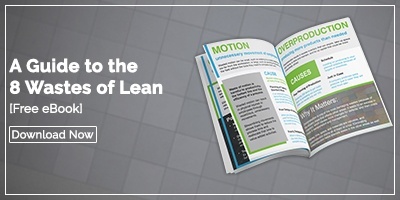I created dozens of cheat sheets during my high school and college career. Don’t worry; I didn’t use them to cheat on the test. I found that the exercise of creating a crib card helped me review the relevant material and organize my thoughts, so when it was time for the exam, I was well prepared to do well without resorting to fraud. Anything that I would want to put on the sheet was something that I should fully understand.
created dozens of cheat sheets during my high school and college career. Don’t worry; I didn’t use them to cheat on the test. I found that the exercise of creating a crib card helped me review the relevant material and organize my thoughts, so when it was time for the exam, I was well prepared to do well without resorting to fraud. Anything that I would want to put on the sheet was something that I should fully understand.
You might not “test” your employees on the essential concepts in Lean manufacturing, but there are still some fundamental ideas that they should understand. We’ve put together this brief review of the most important as a place to start. If every team member can discuss and explain each of them, your potential for improvement is vast.
(Note, this post is meant to be a refresher, not an introduction to any of these concepts. For more in-depth information, click on the links at the top of each section.)
Lean Manufacturing Principles
Value – Lean organizations exist to provide value to the customer. The customer defines value. If a product, service, or feature has value, the customer is willing to pay for it.
Value Stream – The value stream is the entire lifecycle of a product or service from development through the customer’s use and disposal. Anything that does not add value in the eyes of the customer (waste) is minimized or eliminated from the value stream.
Flow – The value stream should flow seamlessly from beginning to end. Interruptions in flow create waste.
Pull – There should be no excess inventory or work in progress. Ideally, nothing is created until the customer requires it.
Perfection – The perfect value stream evolves through a series of continuous improvements.
The Eight Wastes of Lean
Inventory – Excess inventory includes raw materials, equipment, supplies, or anything else that is not needed in the immediate future.
Motion – The waste of motion is unnecessary or over-complicated movements of people or machines.
Transportation – The waste of transportation is the unnecessary movement of items such as inventory or equipment.
Waiting – Waiting occurs when one process is ready for input, but the work-in-progress isn’t prepared. This is waste.
Over Processing – Over processing happens when more work or complexity is put into something that does not produce value for the customer.
Overproduction – Overproduction is producing more of a product or service than customers demand.
Defects – Defects are flaws or errors that prevent a product or service from being useful for the customer without correction or re-work.
Human Potential - Whenever an employee is not fully engaged, their ideas are not shared, or time is wasted, the waste of human potential occurs.
Lean Manufacturing Tools and Techniques
PDSA - PDSA is a Lean improvement cycle that consists of four steps: Plan, Do, Study and Act. PDSA is used to manage incremental improvement.
Standard Work - The Standard Work is the documented best practice for a given process. It is consistently applied until it becomes as the basis for improvement.
Kanban - Kanban is a visual management system that indicates what to produce, when and how much.
Value Stream Mapping - Value Stream Mapping is used to visualize the flow of materials and information required to deliver a product or service to the customer.
Hoshin Kanri - Hoshin Kanri is a strategic planning approach used by Lean manufacturing organizations. It means “direction management.”
A3 Reports - An A3 report is one page that documents the results from a PDSA cycle. The name comes from the A3-sized sheet of paper on which they are designed to fit.
5S - 5S is a workplace organization method that stands for: Sort, Straighten, Shine, Standardize, and Sustain.
Catchball - In Catchball, one person starts with an idea for improvement and “tosses” it to others for feedback, input, and additional insights. It is used during strategic planning and daily improvement.
Gemba Walks - The Gemba walk technique involves managers or supervisors going to the place where work gets done to observe and identify opportunities for improvement.
The 5 Whys - The 5 Whys technique is used to get to the root cause of a problem. A problem statement is drafted, and then employees ask “Why,” until the root cause is uncovered (usually about five times).
If it were time for my final exam on Lean manufacturing, these are the items I’d be sure to have on my cheat sheet (AKA preparation notes). What about you? Are there any more concepts, terms, or tools you would add? If so, comment away.



Add a Comment